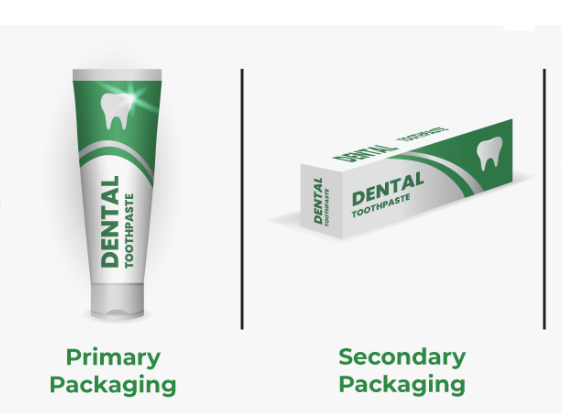Primary and Secondary Packaging: How They Work Together
In the intricate world of product design and distribution, packaging plays a pivotal role in ensuring that goods reach consumers in excellent condition while enhancing brand visibility. Effective packaging solutions often involve two critical components: primary and secondary packaging, and the difference between primary and secondary packaging. Understanding how these elements collaborate is essential for businesses aiming to achieve efficiency, sustainability, and customer satisfaction.
What is Primary Packaging?
Primary packaging refers to the first layer of packaging that comes into direct contact with the product. Its primary purpose is to protect the product, preserve its quality, and provide convenience to the end user.
Functions of Primary Packaging
- Protection: Shields the product from environmental factors such as moisture, air, light, and contamination.
- Preservation: Extends the shelf life of consumables, pharmaceuticals, and other perishable items.
- User Convenience: Offers features like resealable closures, single-use portions, or ergonomic designs for ease of use.
- Brand Communication: Serves as a medium to display essential information, branding, and regulatory compliance details.
Examples of Primary Packaging
- Bottles for beverages and medicines
- Tubes for cosmetics and creams
- Blister packs for tablets
- Sachets for single-use condiments or powders
- Cartons for eggs or fragile goods
What is Secondary Packaging?
Secondary packaging is the outer layer that houses one or more units of primary packaging. While it doesn’t come into direct contact with the product, it serves vital functions in marketing, logistics, and protection.
Functions of Secondary Packaging
- Product Grouping: Consolidates multiple primary packages for ease of handling and transportation.
- Protection During Transit: Provides an additional layer of protection against physical damage, crushing, or external elements.
- Marketing and Branding: Enhances the visual appeal and communicates the brand’s message to consumers.
- Storage Efficiency: Facilitates better stacking and space utilization in warehouses and retail shelves.
Examples of Secondary Packaging
- Corrugated cardboard boxes
- Shrink-wrapped bundles
- Carton sleeves for grouped products
- Display boxes for retail settings
- Multi-pack containers for beverages
Key Differences Between Primary and Secondary Packaging
| Aspect | Primary Packaging | Secondary Packaging |
|---|---|---|
| Purpose | Direct product protection | Grouping and additional protection |
| Material Used | Food-grade plastics, glass, or paper | Cardboard, corrugated boards, or film |
| User Interaction | Direct interaction with end-user | Limited user interaction |
| Design Focus | Product preservation and convenience | Storage, transport, and branding |
How Primary and Secondary Packaging Work Together
The synergy between primary and secondary packaging is indispensable. Both layers complement each other to fulfill overarching goals such as product safety, cost-effectiveness, and environmental sustainability. Let’s explore how these elements harmonize in different stages:
Protection and Preservation
Primary packaging safeguards the product’s integrity, while secondary packaging provides an additional buffer against external impacts during transportation and storage. For instance, fragile glass bottles (primary packaging) are often encased in dividers within corrugated boxes (secondary packaging) to prevent breakage. more
Efficiency in Logistics
Secondary packaging optimizes storage and transportation by consolidating multiple units into manageable bundles. This not only reduces shipping costs but also minimizes the risk of product loss. For example, individually wrapped snack bars (primary) are often grouped in branded cartons (secondary) for efficient distribution.
Brand Visibility and Consumer Appeal
While primary packaging communicates critical information to the end-user, secondary packaging amplifies brand visibility and ensures products stand out on retail shelves. Eye-catching designs and logos on secondary packaging can attract consumer attention while complementing the primary packaging’s messaging.
Sustainability Initiatives
In today’s eco-conscious market, companies are increasingly adopting sustainable materials for both primary and secondary packaging. Biodegradable films, recycled cardboard, and minimalist designs are examples of how businesses can reduce waste and improve environmental impact.
Design Considerations for Effective Packaging
Creating a seamless interaction between primary and secondary packaging requires thoughtful design. Below are critical factors to consider:
Material Selection
- Durability: Materials must withstand physical stresses during transit.
- Compatibility: Ensure the primary packaging’s material does not react with the product.
- Eco-friendliness: Opt for recyclable or biodegradable materials where possible.
Cost Efficiency
Balancing functionality and cost is essential. Overengineering packaging can lead to unnecessary expenses, while underengineering can compromise product safety.
Regulatory Compliance
Both primary and secondary packaging must adhere to industry regulations, especially in sectors like food, pharmaceuticals, and hazardous materials.
Aesthetic Appeal
Design elements such as color schemes, typography, and imagery should align with the brand’s identity and target audience preferences.
Trends in Packaging Innovations
The packaging industry is rapidly evolving like Box Packaging, with advancements focusing on enhancing functionality, sustainability, and customer experience.
- Smart Packaging: Incorporates technologies like QR codes, NFC tags, or temperature sensors to engage consumers and monitor product conditions.
- Minimalist Design: Reduces material use while maintaining functionality and aesthetics.
- Reusable Packaging: Encourages consumers to repurpose packaging, reducing waste.
- Flexible Packaging: Lightweight and versatile solutions that adapt to various product shapes and sizes.
Conclusion
Understanding the dynamic relationship between primary and secondary packaging is crucial for businesses striving for excellence in product presentation and delivery. By leveraging the unique strengths of each layer, companies can enhance efficiency, reduce costs, and delight customers. In a competitive marketplace, innovative and well-executed packaging can set a brand apart, ensuring products reach their intended audience safely and effectively.




